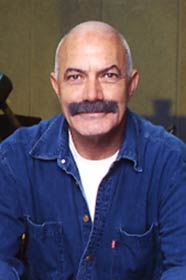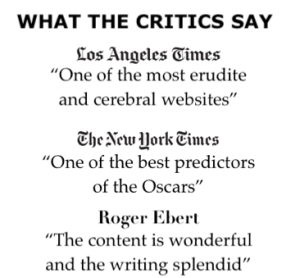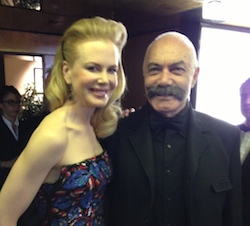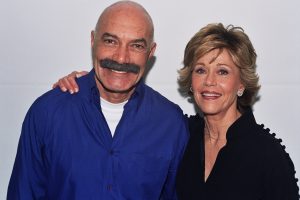Raker Endfield (November 10, 1914 – April 16, 1995) was an American director, who also worked as a writer, theatre director, and inventor, best known for The Sound of Fury (1950), Hell Drivers (1957) and Zulu (1964).
Born in Scranton, Pennsylvania, he worked in the New York theatre in late 1930s before moving to Hollywood in 1940.
After World War II, his film career was interrupted by the Hollywood blacklist. He resettled in London at the end of 1951.
Cyril Endfield was born in Scranton, PA on November 10, 1914, the first of three children. His parents were first generation Jewish immigrants from Eastern Europe; his father ran a fur business.
Cyril developed an early interest both in chess and sleight-of-hand card magic, publishing a routine in a magicians’ magazine at the age of 16.
In 1932 he won a scholarship to Yale, but delayed his arrival because of the collapse of his father’s business during the Depression.
While in Scranton, he first met Israel Shapiro (Paul Jarrico), a politically conscious screenwriter-to-be who would become a life-long friend.
At Yale, Endfield’s attitude to studies was ‘rather lackadaisical’, although he read widely, and developed extra-curricular interest in new science fiction.
Much of his time in New Haven was devoted to the theatre and radical politics: he joined the local Unity Theatre and was member of the Young Communist League. Rather than graduate, Endfield left Yale in early 1936, moving to and taking classes at the leftist New Theatre League, supporting himself by acting jobs and magic acts to new theatre revues.
At age 23 he joined the League as a teacher, before spending a year directing an amateur theatre group in Montreal. It was also here that he married actress Fanny Shurack (stage name Osborne).
In 1940, with a baby due, the couple moved to Hollywood, and Endfield looked for work. His first assignment, a short-lived job with Orson Welles’s Mercury Theatre unit at RKO, followed a random meeting with Welles at a Los Angeles magic shop.
He secured a position with the short subject department at MGM. But his first film, Inflation (1943), a well-regarded propaganda short approved by the Office of War Information, was quickly withdrawn from distribution after criticism from the Chamber of Commerce. The United States’ entry into World War II had made studios sensitive to criticism.
Endfield remained at MGM until military service with the U.S. Army at Fort Crowder in Missouri. After the war he returned to the studio, before writing and directing low budget Joe Palooka features (based on the comic strip) for Monogram.
What he later called his first “auteur effort,’ The Argyle Secrets (1948), was made in 9 days of shooting, from his short radio play for CBS Suspense series.
Endfield’s career revived in 1950, with the release of two well-received crime features, The Underworld Story and The Sound of Fury (Try and Get Me!).
In 1951, Endfield’s career derailed as a result of hearings by the House Committee on Un-American Activities. Screenwriter Martin Berkeley named him in September 1951 as being involved with left wing political associations (at the New Theatre League in New York in the 1930s, and Hollywood in 1943).
Endfield was called to testify and, while he was reluctant to plead the Fifth Amendment before the Committee, he found the option of ‘naming names’ to be unacceptable. He made settlement with his wife, with whom he had separated, and sailed for England in December 1951. He slowly re-established filmmaking career in London.
Endfield was 37 when he began new life in the UK, and it was a struggle to get work. The British security services took close interest, and for a time there was a real possibility of him being sent back to the US.
Endfield was one of American filmmakers with left-wing associations who moved to Europe in the early fifties because of the blacklist (notably Joseph Losey, John Berry, Jules Dassin, and Carl Foreman).
Stanley Baker: Frequent Actor
In the UK he made low budget films. His association with the producer Benjamin Fisz led to two better funded productions, Hell Drivers (1957) and Sea Fury (1958), for Britain’s largest production company, the Rank Organisation; both featured Stanley Baker, who was to appear in six of his films.
In 1957, he was given permission to remain permanently in UK, having remarried in March 1956, to the model Mo Forshaw.
Yet Endfield’s career remain a struggle, and the blacklist still denied international productions, with American finance. In 1960, he was offered the direction of Mysterious Island by Columbia that he decided that he needed to clear himself by appearing before the House Committee on Un-American Activities in Washington. Endfield had written to the Committee in August 1958, but it was in March 1960 that he reluctantly flew to Washington D.C. to appear before the Committee. He admitted his associations with Communist Party, and of distancing himself from the Party after the war, such that some left-wing friends saw him as a renegade. At this late stage, with the blacklist beginning to collapse, all of those named were already blacklisted.
His action allowed him to direct Mysterious Island (1961), at a time when he and Stanley Baker were working to try and set up an ambitious production of Zulu in South Africa.
From 1949 to 1951 Endfield’s profile was on the rise. He directed The Underworld Story (1950), crime story with social overtones (with Dan Duryea, Herbert Marshall, Howard da Silva), made for subsidiary of Monogram Pictures.
He followed this up with The Sound of Fury (1950), for the independent Robert Stillman Productions (distributed by United Artists), at the end of the year.
He described both films as ‘nervous A’ pictures, meaning that they had a budget of around $500,000. Their cost was beyond that of a B-picture, but still well short of that of ‘A’ pictures. This was a step up for directors such as Endfield and followed in the tradition of the successful pictures associated with rising producer Stanley Kramer in the late forties, notably Champion (1949) and Home of the Brave (1949). Both the 1950 films, and particularly the second, came to be seen as film noirs, to use the term then being applied by critics to a series of American crime films that were released in France after the war.[i]
The success of The Underworld Story led producer Robert Stillman to set up The Sound of Fury (Try and Get Me!), based on a 1947 novel by Jo Pagano that dealt with a notorious kidnapping and lynching case of 1933. The events in San Jose had already loosely inspired Fritz Lang’s Fury (1935), with Spencer Tracy.
It was filmed on location in Phoenix, Arizona, and starred Lloyd Bridges, Frank Lovejoy, Katherine Ryan and Art Smith. There were disagreements over the script, but the story was powerful–a decent, family man (Lovejoy) whose desperation for work leads to ill-fated, criminal alliance with psychopath (Bridges). In the climax, a mob invades a prison where the two criminals are being kept.
In London Endfield worked without credit for American producer Hannah Weinstein, directing 3 pilot episodes for a television series called Colonel March Investigates, with Boris Karloff.
His other films were directed anonymously, with another director – Charles de la Tour – often being credited, and being paid to stand by on set. This partly reflected then rules of the film industry union, the Association of Cinematograph Technicians (ACT), as well as the reluctance of American distributors to handle films that carried the names of those blacklisted.
Such films included The Limping Man (1953) and Impulse (1955), while for The Master Plan (1955) Endfield was credited as Hugh Raker. The director’s credit for The Secret (1955), and Child in the House (1956) was C. Raker Endfield, although the latter film still saw la Tour standing by. There are some resonances of the blacklist experience in The Secret (with Sam Wanamaker) and in Child of the House, the first of Endfield’s films with Stanley Baker.
Hell Drivers (1957) was breakthrough in scale and ambition; it was successful in the UK and has attained cult reputation. The subject, from a short story by John Kruse, concerned the trucking industry, and the short-haul transport of ballast, by a private company that stokes the ultra-competitive behaviour of its drivers. A publicity still of the time described it as a ‘drama of men who battle for their livelihood in ten-ton trucks.’ Stanley Baker plays the driver (and ex-con) Tom Yately, while the strong cast includes Herbert Lom, Peggy Cummins, William Hartnell, and Wilfred Lawson, together with, in small but significant roles, emerging British actors Sean Connery and Patrick McGoohan.
The Rank film that followed, Sea Fury (1958), seeing both as drawing inspiration from Hollywood dramas of working-class life. The Sunday Times review referred to “a pace and muscular command of violent action uncommon in British cinema”, while another critic, referencing Henri-Georges Clouzot’s 1953 film The Wages of Fear (Le salaire de la peur), wrote of ‘a British Wages of Fear’. Sea Fury drew on similar aspects of the world of work, in this case following the efforts of men on salvage boats off the coast of Spain; the action sequences attracted particular critical attention.
Neither film was successful, and in the late fifties Endfield become discouraged by lack of opportunities in the industry. Several film projects collapsed, including adaptations of Evelyn Waugh’s Scoop, and Mary Webb’s Precious Bane, although he directed Mysterious Island (1961), a studio project that exploited Ray Harryhausen’s special effects to tell the Jules Verne story.
He worked on commercials, while he and Baker struggled to make Zulu (1964), a recreation of the 1879 engagement between four thousand Zulu warriors and small garrison of British soldiers at Rorke’s Drift, in southern Africa. With script by John Prebble, Endfield and Baker (co-producers) achieved financing from Joseph Levine, and Paramount. The film was a huge success in Britain and has remained one of the most popular of British war films.
Endfield took a chance on inexperienced actor Michael Caine, age 30, to play (opposite Baker) one of the two British officers, and personallengaged the then Zulu chief, Prince Mangosuthu Buthelezi to play Cetshwayo, the King of the Zulus at the time. Caine has long recalled that it took an American to give this working-class actor the chance to play a British officer role.[vii] His acting career never looked back. The resulting film uses the epic scenery of the Drakensberg Mountains and the Royal National Park, establishing the beleaguered colonial garrison and then elegantly depicting the hour-long battle. For all the lack of historical context, and developed characters on the Zulu side, the film avoids jingoism, and presents the British officers as having a final sense of self-disgust at their survival.
Despite this success, Endfield struggled, as American financing for British projects became scarcer. His last film as director was Universal Soldier (1971), with George Lazenby.
He wrote the screenplay (with Anthony Storey) for Zulu Dawn (d. Douglas Hickox, 1979), and a novel with the same title (also 1979).
He had a life-long passion for close-up, sleight of hand magic, particularly involving card manipulations. As a youngster in Scranton he gave demonstrations and published tricks for the magic fraternity, while in New York in the late thirties, and in Los Angeles in the forties he designed popular magic acts. When he came to London in the fifties he was in demand, and gave presentations, including at the Magic Circle, while he maintained friendships with other exponents of card magic, including Dai Vernon, as well as with scientists with an interest in card magic and issues of probability. A book of Endfield’s card magic was published in Britain in 1955, while in 1959 he appeared on a BBC programme on contemporary magic, along with Vernon and (Tony) Slydini. Endfield maintained a correspondence with science writer Martin Gardner on close-up card magic, and science and pseudo-science, and was encouraging to younger practitioners, for example, Michael Vincent. Science fiction literature was another of his passions.[ii]
Endfield was involved with the theatre. After his time at the New Theatre League in the late thirties he ran a leftist ‘social’ theatre for around a year in Montreal. In the UK he was involved as director of several theatrical performances, the most notable of which was the run, for over a year (1962–63), of Neil Simon’s play Come Blow Your Horn, in London’s West End.
Endfield was also interested in invention, technology and design. He designed and patented a portable chess set composed of hand-crafted pieces that could be fitted into silver cylinders. The set was marketed to commemorate the World Championship match between Bobby Fischer of the United States and Boris Spassky of the Soviet Union, in Reykjavik in 1972. In 2021 there was a renewed interest in developing a miniature chess set based on Endfield’s design.
In the late 1970s and 1980s, Endfield became interested in devising, financing and marketing a hand-held mechanism, essentially early form of word processor. He worked with Chris Rainey on the device on which text could be inputted and subsequently connected to a printer. In the early 1980s the finished product, the Microwriter, was sold around the world with some success. Endfield and his collaborators receiving a British Design Award in 1990.
Cy Endfield died in 1995 in Shipston-on-Stour, Warwickshire, England, age 80. He is buried in Highgate Cemetery.
Reputation and legacy
Endfield’s first critical success (apart from the praise for the largely unseen 1943 short, Inflation) came with the release of The Sound of Fury (Try and Get Me!). The film attracted positive attention, despite its commercial failure. The Saturday Review of Literature (in February 1951) welcomed the low-budget feature that ‘challenges comparison with the million-dollar epics.’ After the film’s UK release, Gavin Lambert reviewed it in the British Film Institute (BFI)’s Monthly Film Bulletin. Lambert referred to the film’s remarkable ‘characterisation and the handling of the drama’ – ‘at times reaching a complexity rare in films of this type.’ (Lambert, with Lindsay Anderson, had founded the influential post-war British film magazine Sequence.)
In 1964 Pierre Rissient, a French cinėaste and sometime producer, organized a partial retrospective of six of Endfield’s films at the Cinémathèque française. This included the first French release of The Sound of Fury. While in Paris for this event, Endfield commented about his approach to directing, noting that ‘you don’t necessarily have to go to art theatres to find art.’ He revealed his admiration for storyteller directors – Lang and Raoul Walsh – who were able to make some degree of personal comment on the world while being appreciated by popular audience.
Since Endfield’s death in Shipston-on Stour, UK, April 16, 1995 (aged 80), criitcs have continued to credit his contribution to film noir.
Filmography
Short film
Inflation (1943)
Radio Bugs (1944)
Tale of a Dog (1944)
Dancing Romeo (1944)
Nostradamus IV (1944)
The Great American Mug (1945)
Magic on a Stick (1946)
Our Old Car (1946)
Features
Year Title Director Writer Producer
1946 Joe Palooka, Champ No Yes No
Mr. Hex No Yes Yes
Gentleman Joe Palooka Yes Yes No
1947 Stork Bites Man Yes Yes No
Hard Boiled Mahoney No Yes No
1948 Sleep, My Love No Uncredited No
The Argyle Secrets Yes Yes No author of original radio play
1949 Joe Palooka in the Big Fight Yes Yes No
Joe Palooka in the Counterpunch No Yes No
1950 The Underworld Story Yes Yes No
The Sound of Fury Yes Uncredited No
1952 Tarzan’s Savage Fury Yes No No
1953 The Limping Man Yes No No Credited as “Charles de Lautour”
1954 Impulse Yes Yes No
1955 Crashout No Uncredited No
The Master Plan Yes Yes No Credited as “Hugh Raker”
The Secret Yes Yes No
1956 Child in the House Yes Yes No
1957 Hell Drivers Yes Yes No
Curse of the Demon No Uncredited No Final screenplay
1958 Sea Fury Yes Yes No
1959 Jet Storm Yes Yes No
1961 Mysterious Island Yes No No
1964 Zulu Yes Yes Yes
Hide and Seek Yes No No
1965 Sands of the Kalahari Yes Yes Yes Also actor
1969 De Sade Yes No No
1971 Universal Soldier Yes Yes No Also actor
1979 Zulu Dawn No Yes No
Television
1956 Colonel March of Scotland Yard 3 episodes
Brian Neve, The Many Lives of Cy Endfield: Film Noir, the Blacklist and Zulu (Madison: University of Wisconsin Press, 2015).
Rebecca Prime, Hollywood Exiles in Europe: The Blacklist and Cold War film Culture (New Brunswick, NJ., Rutgers University Press, 2014).










